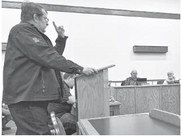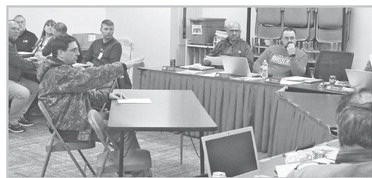Marathon County maintaining strong harvest numbers and hunting opportunities
The state’s largest county, Marathon County, has been in a maintain deer population objective ever since the County Deer Advisory Council system began more than five years ago and maintaining seems to be exactly what hunters there are doing.
Deer harvests in 2018 in the county across all platforms were similar to 2017 and not much change is expected in 2019.
Antlerless authorization levels and the quota increased slightly this year as CDAC and DNR officials hope to see a healthy harvest of does in the county to make sure deer populations don’t get far out of hand.
One free farmland authorization went to every deer license buyer who wanted one this year in Marathon County, which is how the vast majority of antlerless permits are issued in the county. An additional 2,000 private-land tags were made available for purchase. As of early November, 400 private-land authorizations were still available.
The antlerless harvest quota was set at 7,000 this year by Marathon County’s CDAC, up from 6,500 last year.
According to Wisconsin DNR statistics, 27,537 antlerless authorizations were issued in Marathon County last year for private land and 4,345 were filled (15.8%). There were 7,383 issued for public-land hunters and 872 of those were filled (11.2%).
When all of 2018’s hunting harvests were totaled, about 53% (6,229) of Marathon County’s registered deer were antlerless.
As a Central Farmland unit, large tracts of agricultural land cover the county. In the DNR’s 2019 White-tailed Deer Hunting Preview, the county’s wildlife biologist Brandon Stefanski said delayed planting of crops in the spring could impact harvest and potentially lead to more crops still standing during the season.
There are also plenty of public hunting opportunities in the county.
“The Marathon County forest system is comprised of nine scattered forest units totaling close to 31,000 acres of quality deer hunting land,” Stefanski said. “The McMillan Marsh Wildlife Area and parts of the Mead Wildlife Area contain a wide array of habitat types that ultimately provide exceptional hunting opportunities.”
Hunters during the 2018 gun deer season bagged 3,677 bucks and 4,271 antlerless deer, according to registration data. Both numbers were up slightly over 2017, resulting in about 360 more deer being shot in those nine days. The county did see slight drops in archery and crossbow harvests in 2018 compared to 2017. The total crossbow harvest was 1,758 deer, compared to 1,813 in 2017, while the archery harvest was 1,261 deer, compared to 1,452 in 2017. Archery numbers are generally dropping annually statewide with more widespread use of crossbows.
Through Nov. 5 this year, according to DNR statistics, Marathon County hunters had taken 643 bucks and 513 antlerless deer for a total of 1,156, while archery hunters had nabbed 418 bucks and 342 antlerless deer for a total of 760.
in 2019, with significant farm acreage not planted in spring due to wet conditions, deer are concentrated on the fields that were planted in soybeans and corn. In areas of the farmland zone, it’s not uncommon to see 20 deer and more on a single field, chomping away.
Farmers — and even some hunters — are wary of too many deer.
“From my observations I believe this unit saw a big increase in population once again this year,” said a survey respondent. “The goal of increasing populations is clearly working. My concern is that rather than slowly increasing the antlerless harvest quota along with the population change a reduction in the antlerless quota is being proposed this year. We need to take a more responsible approach to increasing the population in this unit. Large fast swings are not good and result in unintended consequences. This is exactly what I see happening. Please consider increasing the antlerless quota and available antlerless permits in order to prevent a swing to the overpopulation issues we saw 15-20 years ago.”
Another survey respondent said, “Deer numbers in my area seem to be out of control and this past winter appears to have had little effect in reducing the population. In the past few years the damage to the forest ecosystem has become extensive. Hardwood seedlings and saplings are browsed to the snow line in winter and most new growth is taken in spring. They’ve even developed a taste for balsam fir, which is now browsed as badly as cedar and hemlock. I plan to plant 500 white pine this spring and wonder if any will survive the current level of browsing. The forest ground layer is also suffering, with ground-nesting birds and other species likely impacted. Few herbaceous species other than sedges are surviving to reproduce. Based on nearly 40 years of observing my forest land in northern Clark County, I believe that deer are seriously affecting the entire ecosystem, not to mention horticultural plantings and crops. The situation is becoming critical.”





